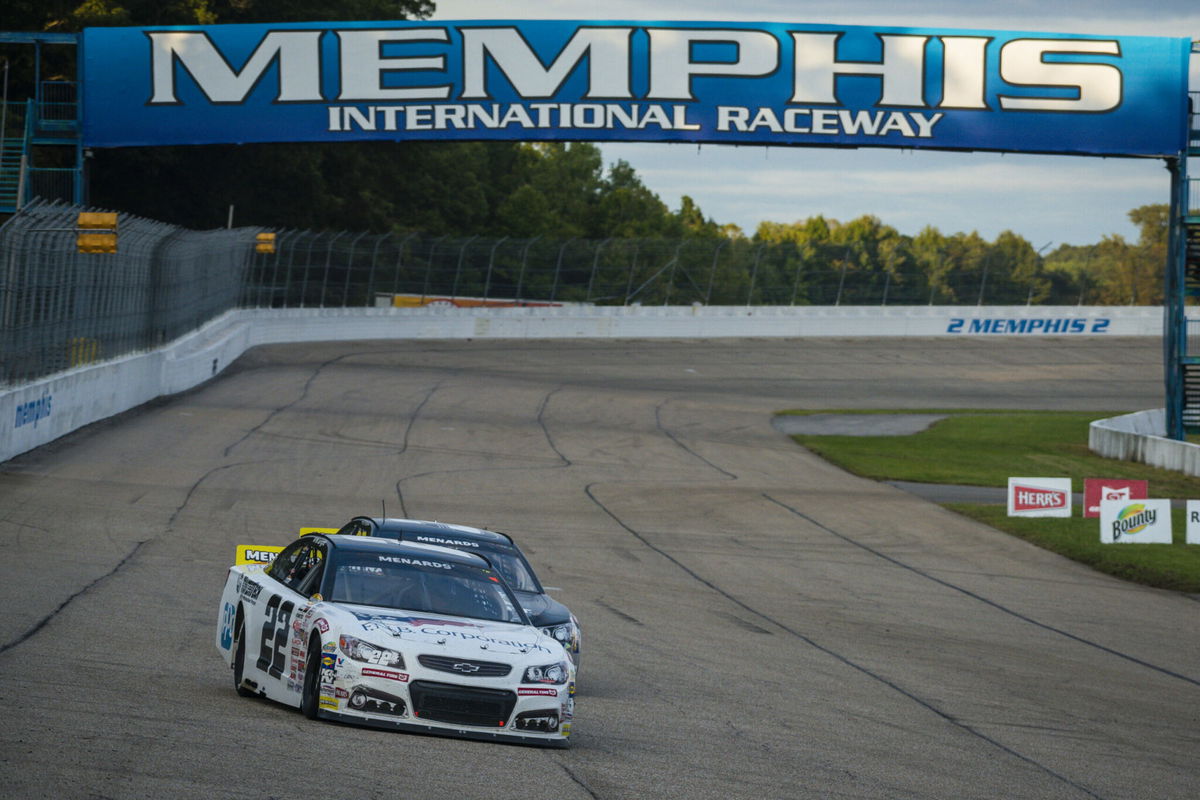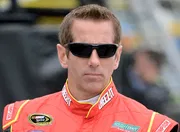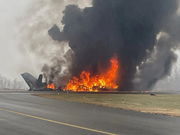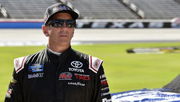
Imago
Kris Wright (22) during the Sioux Chief PowerPEX 200 at Memphis International Raceway in Millington, Tennessee.

Imago
Kris Wright (22) during the Sioux Chief PowerPEX 200 at Memphis International Raceway in Millington, Tennessee.
Looking at a lost jewel can always be emotional. Embedded in NASCAR’s 76-year history are several victories, crashes, and moments that people seldom think about. Some of those long-forgotten memories were made at a 1.5-mile oval located in Arkansas farm country, a short drive west of Memphis, Tennessee. This was Memphis-Arkansas Speedway. Even Dale Earnhardt Jr. himself made some of his early career starts at this NASCAR track.
Watch What’s Trending Now!
However, this NASCAR track has long fallen into ruin, with neglect and weeds overpowering it. It catered to a feisty NASCAR schedule dating back to the 1950s and also hosted NHRA and ARCA Menards events. Now, all one can do is look back at those events with nostalgia, as a NASCAR driver did recently.
ADVERTISEMENT
An old NASCAR track tugging at one’s emotions
Dale Earnhardt Jr. has been a fan of breathing life into old racetracks. The veteran pulled this off for North Wilkesboro Speedway, which was abandoned in 1997. It reopened in 2022 and began hosting the All-Star Race. Similarly, Dale Jr. has documented several forgotten racetracks on his TV show, ‘Lost Speedways’, on NBC’s Peacock premium network. Among the countless NASCAR tracks he visited was Memphis-Arkansas Speedway, steeped in the sport’s memory.
Tiny Lund, the 1963 Daytona 500 winner, flipped end over end at Memphis, and he was so big that his seat belt broke, and he was thrown from the car. More notably, Dale Jr. ran at Memphis in 1999 in the inaugural NASCAR Busch Series 250, finishing in second place. Who can forget the chaotic 2007 Xfinity Series race at Memphis that saw 25 cautions for 250 laps! All these vibrant memories came to life in a recent X post, which painted the track’s sobering reality.
A firefighter based in Jonesboro recalled his time working at Memphis, formerly called Memphis Motorsports Park. He posted pictures of the dilapidated NASCAR track and penned an emotional message. He recalled Dale Jr‘s race: “Sad walk down memory lane at a lost speedway today. Watched @DaleJr race here from the grandstands in 1999. Worked my first races as a firefighter on pit road in the 2000’s as guys like @KevinHarvick @keselowski @ClintBowyer raced for wins. RIP Memphis Motorsports Park.” Colby Evans, a Historic Sportscar Racing (HSR) NASCAR Classic driver, reshared this post and wrote, “To think ARCA was here only 5 years ago is astonishing…It looks so bad, sad to see Memphis in this state.”
ADVERTISEMENT
To think ARCA was here only 5 years ago is astonishing
It’s looks so bad, sad to see Memphis in this state https://t.co/mEWsCj63nf
— Colby Evans (@StartAndParkCar) May 28, 2025
The ARCA Menards Series was the last discipline to visit Memphis. For NASCAR, however, it has been a long time. In 2009, Dover Motorsports Inc. sold the NASCAR track to Gulf Coast Entertainment, scaling down the Camping World Truck Series and Nationwide Series events there. Denis McGlynn, president and CEO of Dover Motorsports, called it “a difficult decision, but one that ultimately was dictated by economics. For all concerned, including the Memphis community, it is truly sad to see Memphis Motorsports Park taken off the racing schedule.” Although plans to revive the track emerged in 2016, they never materialized.
ADVERTISEMENT
There is no dearth of nostalgic memories for Memphis International Raceway. However, a few tragic memories also come to mind.
Top Stories
Another Almost Fatal Disaster Surfaces From Statesville Airport Amidst Ongoing Greg Biffle’s Crash Investigation

NTSB Appeals for Greg Biffle’s Wife’s Alleged In-Flight Text Messages as Crash Investigation Heats Up

Donald Trump Issues Moving Message of Condolence for NASCAR’s Greg Biffle & Family During North Carolina Address

Air Safety Investigator Probes Possible Co-Pilot Role Amid Greg Biffle’s Fatal Plane Crash Investigation

Horrific Aerial Footage of Greg Biffle’s Fatal Crash Emerges Leaving NASCAR Community in Tears

When high speeds led to disaster
Well, NASCAR has had a long, checkered history in fatal crashes. From Neil Bonnett’s 1994 disaster to Dale Earnhardt‘s heartbreaking passing in the 2001 Daytona 500, the mishaps have been plenty. Dial back the clock a few more decades, and safety was a bigger issue. In the 1950s, Memphis-Arkansas recorded some of the fastest lap speeds. Pole laps often hovered around 100 mph, and race laps averaged 90 mph. While these might seem ‘slow’ in the modern era, in 1950, this was as dangerous as 190mph is today because of the lack of safety. These speeds and an ‘unmanageable’ racing surface led to a pair of deaths in the 1956 Mid-South 250 race weekend.
ADVERTISEMENT
Clint McHugh was reportedly running at 90 when he flipped his Oldsmobile over a three-foot guardrail outside turn three. According to an anonymous newspaper clipping from 1956, “Veteran driver Clint McHugh was killed yesterday when his stock car left the Memphis-Arkansas track…It was the track’s first fatality in three years of operation.” He tumbled 50 feet down the embankment and into an adjacent lake. Then, Thomas “Cotton” Priddy’s Chevrolet lost a wheel and dug into the dirt, flipping end-over-end and ejecting its driver. A video of the crash can be found in the BBC’s archival footage, although the print is too fuzzy to make out the car number.
Clearly, Memphis-Arkansas has a fair share of nostalgic and tragic memories. With renewed sentiment for the track, would NASCAR consider reopening it? Tell us what you think in the comments!
ADVERTISEMENT
ADVERTISEMENT
ADVERTISEMENT
ADVERTISEMENT

